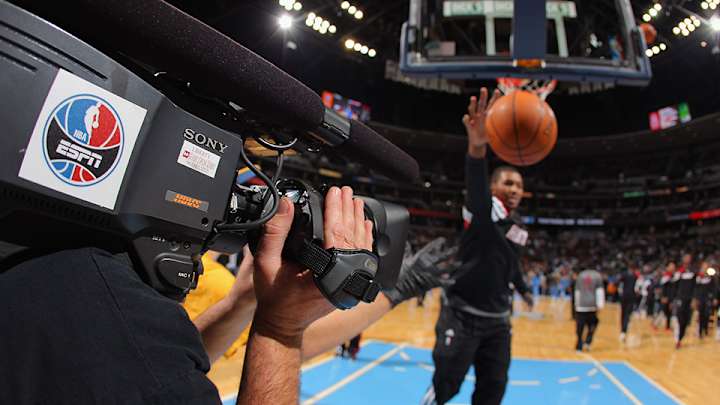Disney using human operators to train automatic cameras for broadcasts

Read about the latest sports tech news, innovations, ideas and products that impact players, fans and the sports industry overall at SportTechie.com.
The Walt Disney Company recently announced they would be enhancing their basketball and soccer television coverage by improving their automated camera technology. Computer engineers are helping automated cameras learn from human camera operators to help create a smoother and cleaner broadcast.
Disney Research published a paper about their imitation learning program that will help improve television broadcasts. With the help of the California Institute of Technology, Disney has begun to develop machine-learning algorithms to make automated cameras more human-like. The hope is to find the right balance between covering all of the action and making it as smooth as possible.
Studying the movements of human camera operators allows the Disney Research team and their partners to understand why the current software would cover a certain play differently than human operators. The software that controls the automated cameras will learn to become aware of any mistakes they might make, in order to correct them in the future.
The automated cameras will learn how human camera operators work by studying every aspect of a game they chose to cover. The hope is to try to eliminate the jerky footage that automated cameras are known for.
Currently automated sports cameras don’t follow the ball in either soccer or basketball. They try and capture the best action by understanding player movement, with the hope of anticipating the flow of play. If the automated cameras guess wrong, the broadcast looks less then stellar.
Jessica Hodgins, vice president at Disney Research, is excited about the direction they are heading.“This research demonstrates a significant advance in the use of imitation learning to improve camera planning and control during game conditions,” she said. “This is the sort of progress we need to realize the huge potential for automated broadcasts of sports and other live events.”
Human camera operators are able to understand the sports they are covering in a much more nuanced way. For one, they often have been watching, or even playing the game for a very long time. Now, automated cameras will be able to learn based on repetition just like their counterparts.
• Get the latest sports tech news in your inbox!
At times humans can be overly aggressive when trying to anticipate game action. Automated cameras tend to be more cautious, as they use algorithms based on player movement.
As of now Disney Research is only working to improve their automated camera coverage for basketball and soccer. Automated cameras have been able to cover basketball more successfully because there are fewer players on a much smaller playing surface.
A majority of Disney-owned ESPN’s live game coverage is for basketball and soccer. Although football is still the biggest sport in the United States, ESPN only broadcasts Monday Night Football.
SI.com’s Richard Deitsch covered ESPN and ABC’s coverage of the recently concluded NBA Finals. They used 30 cameras and 28 replay devices in both Oracle Arena and Quicken Loans Arena. ESPN’s Euro 2016 coverage is currently underway in France. Their 2010 World Cup coverage featured 30 television cameras, and one can assume this number has not gone down. Last year ESPN began experimenting with fewer remote broadcasts for their Major League Soccer coverage. So it’s safe to say Disney entities have invested in quality broadcasts before.
Now, with the new automated cameras learning from their human counterparts maybe fewer cameras will be needed than ever before.
Human camera operators will be used to cover sports for years to come. But with the help of automated cameras that will become more acutely aware of the nuances of the sports they are filming, fans might be able to experience better live broadcasts.
